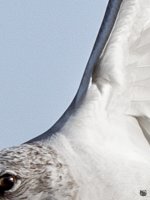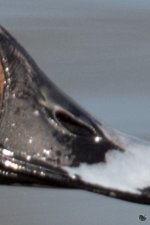Are you talking about the contrast fringe around the tree branches? I occasionally even suffer those during daylight shots, especially with a blue sky. They very often appear in bird shots. I still don't know the actual cause.
Fringes appear at high contrast boundary, especially when the bright side is over3 EV above the maximum. It is due to electrons overflowing from the "over full" well to adjacent wells. You can easily duplicate the effect by using spot metering for a dark object, say a person with a dark dress in bright daylight. You will then see the fringes. If I recollect one of our forum members had the same problem while shooting tennis players.
These fringes also appear in mediocre to bad lenses, the 70-300 AF (non VR) is one such lense which exhibits colour fringing beyond 200mm.


